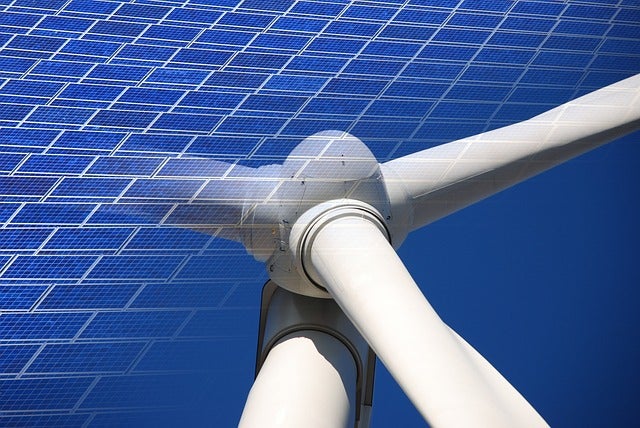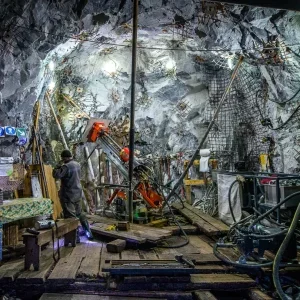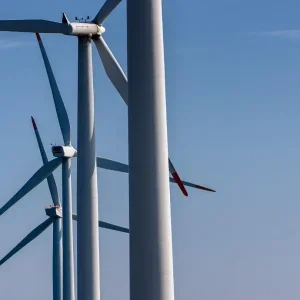
The Mayor of London, Sadiq Khan’s ambition for a zero-carbon railway by 2030 moved a significant step closer today with the publication to market of Transport for London’s (TfL’s) renewable energy requirements. By changing the way electricity is supplied, the Mayor and TfL are seeking to move towards a greater use of renewable energy as a key measure in helping tackle the climate emergency. The aim is that all electricity requirements for the Underground are met via zero carbon sources by 2030.
All passenger rail services operated by TfL are electrically powered and, as part of the London Environment Strategy, the Mayor has set TfL the goal of achieving a zero-carbon railway by 2030. TfL is one of the largest consumers of electricity in the UK, with a requirement for 1.6TWh per annum, equivalent to the electricity consumed by over 437,000 homes* which is 12 per cent of homes across London. TfL currently source electricity directly from the National Grid via the Crown Commercial Service. By developing plans to purchase power from renewable generators through Power Purchase Agreements (PPAs), TfL would enable the rail network to be supplied by energy sources including wind and solar power, rather than a mix of power generators that emit carbon into the atmosphere.
The market testing will explore all elements of these contracts so TfL can secure a good deal for London and will also look at the potential for meeting the GLA group’s wider demand for renewable electricity – a total of 143 GWh which includes Greater London Authority (GLA), London Fire Commissioner (LFC), Transport for London (TfL), Mayor’s Office for Policing and Crime (MOPAC), London Legacy Development Corporation (LLDC) and Old Oak Common and Park Royal Development Corporation (OPDC).
With the current financial challenges facing TfL, the Mayor wants to ensure that the energy used to power its rail network is both cost effective in the long-term and taken from clean sources. The intention is to start with a TfL PPA with energy generators in a phased approach, with the ambition of considering purchasing up to 10 per cent of its demand by Spring 2022 subject to market testing and approval from TfL’s Finance Committee later this year.
The Mayor will also look at opportunities to meet London’s wider public sector electricity demand with renewables, helping achieve zero carbon faster through collaboration with London’s local authorities’ offices, schools and leisure centres. In total these organisations along with the GLA group currently consume around 3TWh of electricity every year – equivalent to the electricity consumed by over 820,000 homes which is 22 per cent of homes across London.
Mayor of London, Sadiq Khan, said: “As one of the single biggest purchasers of energy in London, it is important that TfL leads the way on green energy. This is a vital step towards my ambitions for TfL – and London – to be zero-carbon by 2030. Covid-19 has had a devastating impact but as we recover we want to make sure that we build a better, greener and more equal city. This work to secure cost-effective and renewable energy for the rail network, with ambitions to include the wider GLA group and beyond, will play a key role in London’s green recovery and accelerating action on the climate emergency.”
Chief Safety, Health and Environment Officer at TfL, Lilli Matson, said: “TfL is already a world leader in many environmental initiatives and we are constantly striving to do more to lessen our carbon footprint and help tackle the climate emergency. As one of the largest electricity consumers in the UK, we have a duty to explore fully the contribution that renewable energy can make to running our services. This early market engagement will help us better understand generator preferences, their impact on price and their ability to de-carbonise our future power requirements.”
Chief Executive of the Association for Renewable Energy and Clean Technologies (the REA), Dr Nina Skorupska CBE, said: “We welcome the leadership shown by the Mayor and Transport for London with this initiative, which will help decarbonise the Capital’s Tube and reduce energy costs. This is a major step forward for both the low-carbon transport and power sectors, and we hope to see other London boroughs also getting involved.”
Rebecca Newsom, Head of Politics at Greenpeace UK said: “Green, affordable public transport is crucial for delivering a successful recovery as we emerge from lockdown. These plans for renewable Power Purchase Agreements with TfL take an important step in the right direction. If they are rolled out at the right speed and scale, they will also help to boost renewables across the UK, supporting green jobs and progress towards meeting our national climate targets.”
The introduction of renewable PPAs is one of a number of initiatives underway at TfL to help reduce carbon emissions and improve air quality. Waste heat from the London Underground network has been providing heating and hot water to more than 1,350 homes, a school and two leisure centres in Islington since earlier this year thanks to a pioneering energy centre at Bunhill, and TfL is now talking to the wider market about potential future opportunities across its network. TfL is also leading the way in promoting electric vehicles with more than 360 electric buses now in operation across London, and more than 3,500 Zero Emission Capable Black Taxis now licenced and in operation around the city.






